This is big!
Mark your calendars for April 27 – 30. It’s a City Nature Challenge. Some call it a Bio-Blitz.
It’s the great INTERNATIONAL city challenge — worldwide for the first time.
And we want to WIN IT!
The Valley is entering as its own entity. From Falcon to the Gulf Coast, including ALL of Cameron, Hidalgo, Starr and Willacy counties — this is the geographic area of our “CITY.”
These cities last year had the highest totals of the competition categories.
#1 Dallas
#2 San Francisco
#3 Los Angeles
#4 Austin
#5 Houston
Competition categories:
Total Observations
Species Identified
People Participating
Given the incredible diversity of plant and animal life in the Valley, we think we have an advantage, but we need people to be enthused and commit time to this challenge during the four day operating window.
The organizers are gleefully anticipating knocking Dallas and San Francisco off their top perches — and seeing Rio Grande Valley in that top spot.
It’s EASY!
All that’s involved is downloading an app on your phone — or using a camera and computer — and taking photos of native plants, birds, critters, bugs — the Valley’s native diversity.
It’s that easy!
Here’s all you need to do:
The easiest and quickest way to enter species is to download the app onto your Smart phone, Android or iPhone.
The hardest thing to do is download the app onto your phone if you don’t have your phone’s password — you know, those secret 6 to 8 characters you invented when you first set up your phone?
Hopefully you’ve got that password and login info written down somewhere and you remember where that location is.
Or, start now and establish a new password. That’s where the option “forgot password” comes in handy.
Right, so, with your password in hand — or at least in front of you — go to the app store in your phone and look for:
iNaturalist
Download it. It’s free. You will need to create an account following the prompts. This part truly is easy. But, please, write all the important stuff down, like login, password . . . .
Downloading and creating an account takes only a couple of minutes and, VOILA! You’re ready to start photographing and sending information.
You can practice, but don’t practice too much. Save most of your observations for the four days of the challenge.
I’ve practiced at home. Here’s how it works.
You see the object you want to photograph.
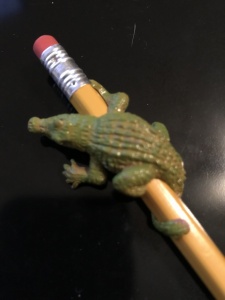
Tap the iNaturalist icon on your phone, then tap the “camera” icon at the bottom of the screen in the center, just above the word, “Observe.” Position your phone over the item you wish to shoot and press the big green button — bottom center of the face of the phone — to take the photo.
After you take the photo, at the bottom of your screen you will now see the words, “Retake” or “Next.”
If you like the shot, tap “next.” If you think you can get a better shot, tap “retake.”
After you press, “next,” locate the big ? — tap it, you’ll get suggestions so you don’t even need to know the name of what you are photographing/submitting. I got a lot of suggestions for my photo including Crocodile and American Alligator.
I didn’t find a suggestion that said “Louisiana Souvenir Alligator Pencil” so I cancelled out of the window and shut down my app so I could get on with writing this post and whetting your competitive spirit so you join the challenge and help the Valley be the overall winner in the 2018 challenge.
This shot would be acceptable to include if I were really able to get this close to this Texas Spiny Lizard with my phone camera.

As it was, I took this shot while peeking around the corner of my house using the longest camera lens I had. Which brings up the other way you can enter this challenge — by taking photos with a camera and entering them via a Website on your computer.
If that’s how you want to do it, go to this link and set up your account now, not during the critical four-day timeframe, unless you’re a whiz at this sort of thing.
My Texas Spiny Lizard photo will not be allowed because the photo was not taken during the challenge dates — April 27 – 30, 2018.
With plants and trees, the specimen does not have to be in bloom in order for you to include it in the iNaturalist database for this most important Valley project.
Here are some examples of acceptable subjects — provided you see these during April 27 and 30, 2018.
The only thing these photos lack is a 6-inch ruler (which will now be your constant companion) included in the shot to show scale. When appropriate — you be the judge.
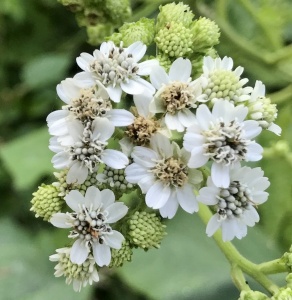
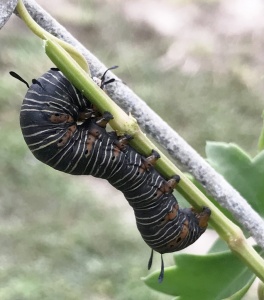
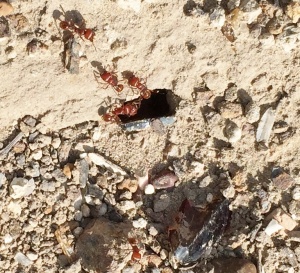
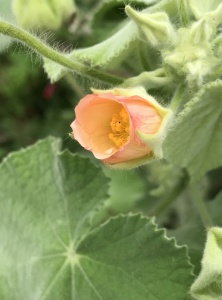
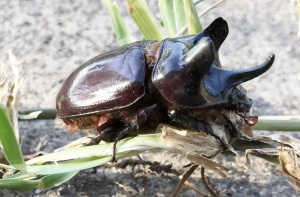

If you’re shooting on your private land, you can opt “Geo Privacy” as either private or obscured. If you don’t opt, the Geo coordinates will be available to anyone on iNaturalist.
Thank you to Park Ranger John Yochum, Estero Llano Grande State Park and Park Ranger Marion Mason, Laguna Atascosa National Wildlife Refuge, for sharing links for more information on this City Nature Challenge.
https://www.inaturalist.org/projects/city-nature-challenge-2018-lower-rio-grande-valley
https://tpwd.texas.gov/huntwild/wild/wildlife_diversity/texas_nature_trackers/naturechallenge/
These ideas are all well and good and helpful if everything goes ok. If you have problems getting all set up, please visit any of the Valley nature preserves, refuges, city, state and national parks, Island birding and native plant centers and ask for help downloading the app or help using the app.
Another great way for chapter members to get some help is to come to the April 14th TMN meeting and graduation dinner. Experts will be standing by to help you download the app and answer questions you may have. — You must have your phone password with you if you want help downloading the app, and be ready to create a login name.
One more item of note. When you upload a photo of a plant, shrub, tree, critter, bird, you will need to select whether it is captive or cultivated — this means that the observation is of an organism that exists in the time and place it was observed because humans intended it to be then and there.
Captive (critter) or cultivated (plant).
Checking the box means that it is NOT wild/native/naturally occurring.
Leaving this box unchecked means it is a wild something or other.
So, the Turk’s Cap in your back yard that you got at last year’s class graduation would get the box checked, but the green anole on it would remain wild even though the back yard is a domestic one.
This may really seem obscure, but rest well assured, if you do it wrong, someone in the iNat system is going to let you know and you’ll have an opportunity to correct it. And I’m SURE the person didn’t really mean to sound so pompous when I uploaded my experimental Texas Mountain Laurel shot from Hugh Ramsey Nature Park after I went to an iNaturalist training class.
Really, don’t be shy about trying this challenge — with our chapter TMNers and our Valley-Sister chapter, South Texas Border Chapter members, who kindly invited us to their iNat training, and Valley park rangers/naturalists and educators, and other involved citizens, we have a great chance of winning the challenge.
More than 75 cities on six continents will be competing to see who can make the most observations of nature, find the most species, and engage the most people in this worldwide 2018 City Nature Challenge.
This is not just a game. It’s a repository of valuable habitat information.
It’s considered Crowdsource Identifications — where you can connect with experts who can identify the organisms you observe.
And you can help Create Useful Data — which helps scientists, resource managers and researchers understand when and where organisms occur.
Like I mentioned — this is BIG!
Results of the City Nature Challenge will be announced Friday, May 4, 2018. Be sure to upload your observations before then!
Load up iNaturalist, and we hope to see you out and about April 27 – 30! Start in your own back yard and then beyond! Team up; pair up — have fun!
